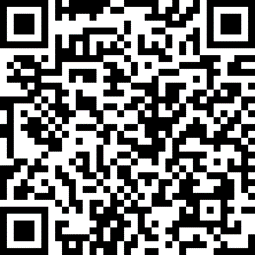非多巴胺能药物
以非多巴胺能系统为治疗靶点的药物正处于研究阶段,并取得了有前景的成果。例如,两项小型安慰剂对照研究已证实,四氢大麻酚能显著改善 TS 患者的抽搐严重程度。[98]Whiting PF, Wolff RF, Deshpande S, et al. Cannabinoids for medical use: a systematic review and meta-analysis. JAMA. 2015;313:2456-2473.http://jama.jamanetwork.com/article.aspx?articleid=2338251http://www.ncbi.nlm.nih.gov/pubmed/26103030?tool=bestpractice.com需要进一步进行大型、可靠的随机对照临床试验 (RCT) 以确认大麻素对 TS 的疗效。
经颅磁刺激治疗法 (TMS)
在过去的十年中,使用经颅磁刺激治疗法 (TMS) 治疗抽动障碍日益受关注。迄今为止,以辅助运动区为治疗靶点的开放性研究已表明,该技术可有效减轻 TS 中的抽搐。[110]Kwon HJ, Lim WS, Lim MH, et al. 1-Hz low frequency repetitive transcranial magnetic stimulation in children with Tourette's syndrome. Neurosci Lett. 2011;492:1-4.http://www.ncbi.nlm.nih.gov/pubmed/21256925?tool=bestpractice.com[111]Le K, Liu L, Sun M, et al. Transcranial magnetic stimulation at 1 Hertz improves clinical symptoms in children with Tourette syndrome for at least 6 months. J Clin Neurosci. 2013;20:257-262.http://www.ncbi.nlm.nih.gov/pubmed/23238046?tool=bestpractice.com[112]Mantovani A, Leckman JF, Grantz H, et al. Repetitive transcranial magnetic stimulation of the supplementary motor area in the treatment of Tourette syndrome: report of two cases. Clin Neurophysiol. 2007;118:2314-2315.http://www.ncbi.nlm.nih.gov/pubmed/17709291?tool=bestpractice.com[113]Mantovani A, Lisanby SH, Pieraccini F, et al. Repetitive transcranial magnetic stimulation (rTMS) in the treatment of obsessive-compulsive disorder (OCD) and Tourette's syndrome (TS). Int J Neuropsychopharmacol. 2006;9:95-100.http://www.ncbi.nlm.nih.gov/pubmed/15982444?tool=bestpractice.com但是,对 20 名 TS 成人患者进行的首次随机、双盲、虚假治疗对照试验并未证实此项发现。[114]Landeros-Weisenberger A, Mantovani A, Motlagh MG, et al. Randomized sham controlled double-blind trial of repetitive transcranial magnetic stimulation for adults with severe Tourette syndrome. Brain Stimul. 2015;8:574-581.http://www.ncbi.nlm.nih.gov/pmc/articles/PMC4454615/http://www.ncbi.nlm.nih.gov/pubmed/25912296?tool=bestpractice.com这一领域需要进行更多研究。
深度脑刺激 (DBS)
目前已发表了一些使用脑深部电刺激 (DBS) 治疗 TS 的病例:大多数病例的治疗靶点是丘脑内侧的中央中核-束旁核复合体 (CM-PF),少数病例的治疗靶点是内苍白球 (GPi)、同时针对 CM-PF 和 GPi、内囊前肢或伏隔核。针对哪个靶点最适于哪些特定 TS 症状的问题,目前尚待达成共识。需要进一步了解不同靶点可能会如何影响抽搐和神经精神症状。[115]Höflich A, Savli M, Comasco E, et al. Neuropsychiatric deep brain stimulation for translational neuroimaging. Neuroimage. 2013;79:30-41.http://www.ncbi.nlm.nih.gov/pubmed/23631986?tool=bestpractice.com使用 DBS 治疗神经精神疾病(例如 OCD)已经超出本综述范围,但是对于难治性 TS 成人患者或严重的 TS 病例,可考虑使用该疗法。随着文献中有关 DBS 治疗 TS 的报告有所增加,并且开展了经过精心设计、使用统一评定量表和诊断标准的研究,DBS 可能成为那些严重和顽固性 TS 患者的可行选择。[116]Mink JW, Walkup J, Frey KA, et al. Patient selection and assessment recommendations for deep brain stimulation in Tourette syndrome. Mov Disord. 2006;21:1831-1838.http://www.ncbi.nlm.nih.gov/pubmed/16991144?tool=bestpractice.com[117]Müller-Vahl KR, Cath DC, Cavanna AE, et al; European Society for the Study of Tourette Syndrome (ESSTS) Guidelines Group. European clinical guidelines for Tourette syndrome and other tic disorders. Part IV: deep brain stimulation. Eur Child Adolesc Psychiatry. 2011;20:209-217.http://www.ncbi.nlm.nih.gov/pubmed/21445726?tool=bestpractice.com[118]Nangunoori R, Tomycz ND, Quigley M, et al. Deep brain stimulation for psychiatric diseases: a pooled analysis of published studies employing disease-specific standardized outcome scales. Stereotact Funct Neurosurg. 2013;91:345-354.http://www.karger.com/Article/FullText/351156http://www.ncbi.nlm.nih.gov/pubmed/24107902?tool=bestpractice.com然而,必须注意关于 DBS 的神经精神方面的问题,其仍处于探索中。[119]Tye SJ, Frye MA, Lee KH. Disrupting disordered neurocircuitry: treating refractory psychiatric illness with neuromodulation. Mayo Clin Proc. 2009;84:522-532.http://www.ncbi.nlm.nih.gov/pmc/articles/PMC2688626/?tool=pubmedhttp://www.ncbi.nlm.nih.gov/pubmed/19483169?tool=bestpractice.com[120]Kuhn J, Gründler TO, Lenartz D, et al. Deep brain stimulation for psychiatric disorders. Dtsch Arztebl Int. 2010;107:105-113.http://www.ncbi.nlm.nih.gov/pmc/articles/PMC2835924/?tool=pubmedhttp://www.ncbi.nlm.nih.gov/pubmed/20221269?tool=bestpractice.com

